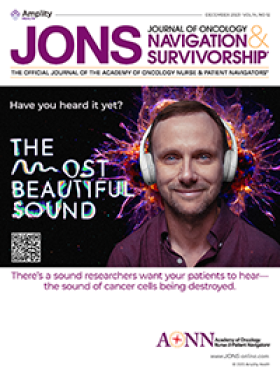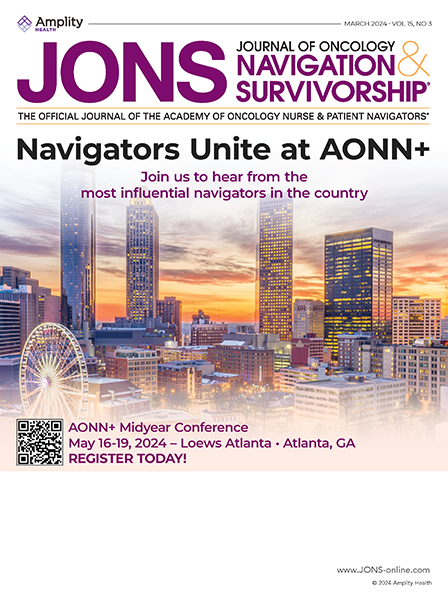Background: Compassion fatigue is common among professionals working in a healing or helping capacity. The prevalence of compassion fatigue among oncology nurses has been recorded as ranging from 8% to 38%.1 Compassion fatigue can stem from clinical stresses, such as a heavy workload, excessive demands, or long hours, as well as from interpersonal interactions with specific patients. The cumulative effects of these elements set the course for burnout and ultimately leaving employment. The Academy of Oncology Nurse & Patient Navigators (AONN+) seeks to equip navigators and oncology healthcare professionals with tools to assess success, support professional growth, and encourage personal and professional satisfaction.
Objectives: To help navigators recognize the visible and invisible signs of compassion fatigue through use of a self-evaluation evidence-based tool. According to their personal results, session participants reflected on their answers, had opportunities for small group discussion, and were directed to resources for help if needed.
Method: In 2 breakout sessions at the 2021 AONN+ Midyear Conference, the virtual navigation audience was offered an opportunity to assess the visible and invisible signs of compassion fatigue in a self-analysis using the Advisory Board Compassion Fatigue Assessment Tool.2 This tool consisted of 18 qualitative questions equally divided between visible and invisible warning signs that could indicate a frontline healthcare professional is moving into the danger zone. The tool is designed for self-assessment but could also be used by managers who are evaluating supervised employees. During the session, each participant rated themselves either yes or no as to their perception for the statements on compassion fatigue. Participants had up to 30 seconds to submit a response.
Results: A total of 119 navigators participated in the 2 sessions, with 28 of them stating they were patient navigators, and 91 marked themselves as nurse navigators. The majority of both groups consistently chose “no” as a self-evaluation response to visible signs of compassion fatigue, with 1 exception on “shows markedly decline in work efficiency.” Despite the majority of respondents indicating they were experiencing no visible signs of compassion fatigue, nearly 50% of respondents actually were suffering some measure of compassion fatigue based on responses to questions pertaining to invisible signs. The verbatim comments offered in the group discussion portion of the session signaled why this may be occurring.
Conclusion: A proactive approach in self-care is a foundation for professional growth that can promote personal well-being and minimize the risk of compassion fatigue. Regularly performing a self-assessment to identify the visible and invisible signs of compassion fatigue, while also pairing the self-assessment with a colleague’s perspective, may help navigators address early signs of compassion fatigue.
References
- Potter P, Deshields T, Divanbeigi J, et al. Compassion fatigue and burnout: prevalence among oncology nurses. Clin J Oncol Nurs. 2010;14:E56-E62.
- Advisory Board. The Compassion Fatigue Assessment Tool. www.advi sory.com/en/topics/nurse-engagement-and-burnout/2019/05/compassion-fatigue-assessment. 2019.




